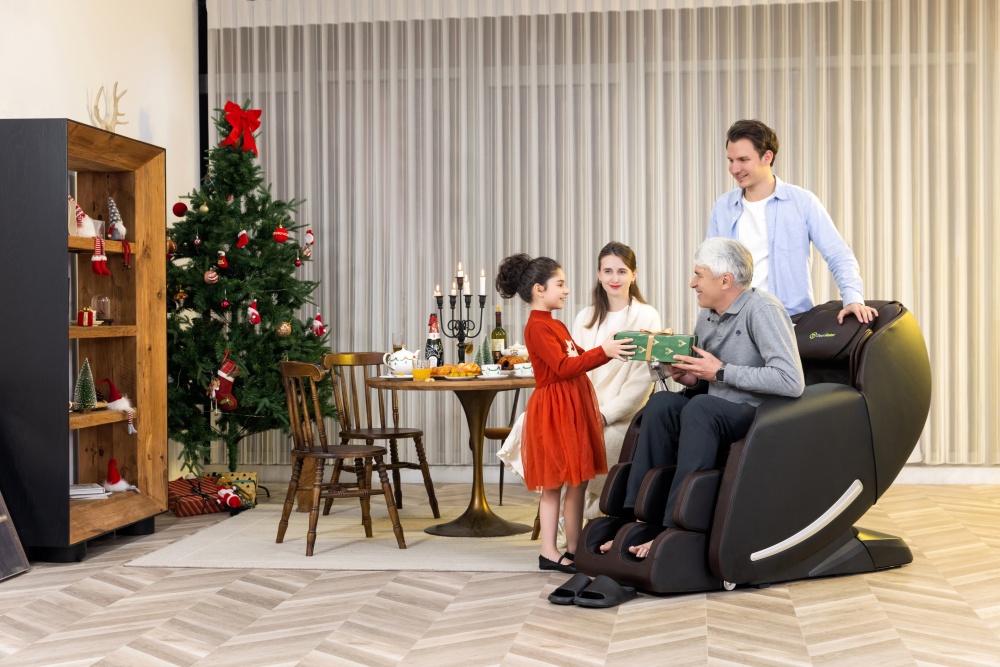
Are Shiatsu Massage Chairs Safe for Seniors?
- Real Relax
- 0
- Posted on
Shiatsu massage chairs are known for offering that deep, relaxing pressure people crave after a long day. But when it comes to seniors, the question often pops up – are Shiatsu massage chairs actually safe? The short answer? They usually are. But like anything health-related, there are some things to consider.
Table of Contents
ToggleWhat’s the Deal with Shiatsu Massage?
Shiatsu is a Japanese massage technique that uses firm pressure with fingers, thumbs or elbows to stimulate pressure points and improve energy flow in the body. In a massage chair, this is recreated with massage rollers or nodes that knead, press, and roll along your back (and sometimes your calves and feet, too).
It’s usually a stronger style of massage—not as gentle as, say, Swedish massage. That’s why it’s great for deep muscle tension, but also why people wonder if it might be too intense for older adults.
So Are Shiatsu Massage Chairs Safe for Seniors?
For the most part, yes—Shiatsu massage chairs are generally safe for seniors, especially those who don’t have major underlying health issues. In fact, many older adults love them for relieving aches and stiffness.
But (and this is important), safety depends on:
- Overall health
- Mobility
- Specific medical conditions
- Proper chair use and settings
Let’s take a closer look at what that means.
Benefits Seniors May Get from Shiatsu Chairs
1. Pain Relief
A Shiatsu massage chair for seniors can help ease common complaints like lower back pain, tight shoulders, or stiff joints. For seniors with age-related discomfort, this can be a huge relief without having to rely on pain meds.
2. Improved Circulation
The pressure from massage rollers and airbags can help boost blood flow—especially in the legs and lower back, which is super helpful for older adults who aren’t as active as they used to be.
3. Relaxation & Stress Relief
Massage helps reduce cortisol levels (that’s the stress hormone), and Shiatsu is no exception. Regular use can help with sleep, mood, and overall mental well-being.
4. Mobility Support
By keeping muscles loose and joints moving more freely, massage may also help seniors maintain better flexibility and range of motion.
When to Use with Caution
While massage chairs can be a blessing, some seniors should talk to their doctor before hopping in. Here’s when to be extra cautious:
Osteoporosis: Deep pressure can be risky for fragile bones.
Pacemakers or heart conditions: Some massage chairs have electromagnetic features (like heating pads or motors) that may interfere.
Recent surgery or joint replacements: Wait until you’re fully healed and cleared by a doctor.
Blood clotting issues or on blood thinners: Massage can affect circulation, which may pose a risk in certain conditions.
Severe spinal problems: If you’ve got herniated discs or spinal stenosis, get professional advice first.
If none of these apply, most seniors should be good to go—especially if the chair allows you to adjust the intensity.
Features Seniors Should Look For
Not all massage chairs are created the same, especially in the budget-friendly range. Here’s what makes a chair more senior-friendly:
Adjustable Intensity Levels
Make sure the chair lets you dial the massage strength up or down. Seniors may want to start on the gentlest setting and work up slowly.
Lumbar Heating
Heat helps relax muscles and improve circulation—great for cold mornings and stiff backs.
Remote Control with Clear Buttons
Big, easy-to-read controls are a must, especially for those with weaker eyesight or hand dexterity issues.
Zero Gravity Recline
This position reduces pressure on the spine and joints—especially helpful for seniors with lower back pain.
Body Fit
Chairs that adjust to your height and shape make the massage more effective and more comfortable.
Full-Body Airbags (Optional)
Gentle air compression on the legs, arms, and shoulders can feel soothing without being too harsh.
Pro Tips for Seniors Using a Shiatsu Chair
Start Slow – Don’t go straight to a full 30-minute deep-tissue session. Try 5–10 minutes at low intensity the first few times.
Skip the Stretch Functions (If Present) – Some chairs have “yoga” or “Thai stretch” features that twist and pull the body. Skip those if mobility is limited or joints feel sensitive.
Avoid Daily Overuse – Massage is great, but too much of a good thing can leave you sore. A few times a week is usually plenty.
Stay Hydrated – Massage can help release toxins stored in muscles, so drinking water after a session is a smart move.
What If a Senior Has Limited Mobility?
Some massage chairs are easier to get in and out of than others. Seniors who have trouble standing up from low seating should look for:
- Higher seat height
- Side handles for support
- Chairs with assisted lifting or powered recline
Alternatively, using a massage pad or cushion placed on a regular chair might be a better solution for those with significant mobility limitations.
Shiatsu massage chairs can be a great tool for seniors—helping reduce pain, boost circulation, and promote relaxation. The key is choosing the right model, starting slow, and always keeping comfort and safety in mind. With the right approach, a massage chair can be more than just a fancy piece of furniture—it can be part of a daily wellness routine that actually makes a difference.
If you’re shopping for a loved one or thinking of treating yourself, just remember: listen to your body, check with your doctor if needed, and enjoy the soothing perks of at-home massage.